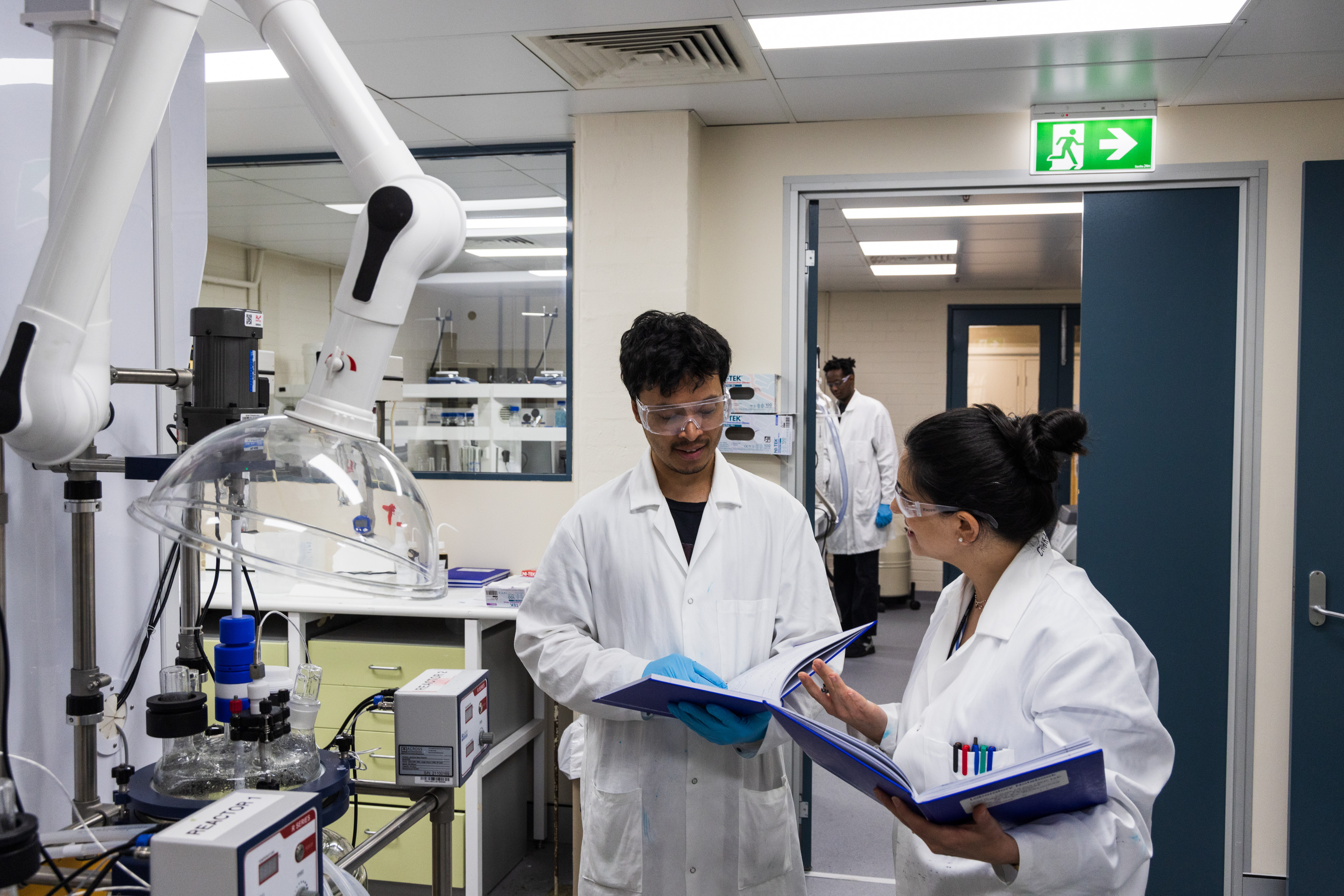We use cookies to give you a better experience on our website. Learn more about how we use cookies and how you can select your preferences.
Advancing High Efficiency Hydrogen Storage Technology

Dr Chiara Fois (Process & Manufacturing Engineering Post-Doctoral Fellow, University of Sydney) and Mr Nirajan Shrestha (Graduate Engineer, Rux Energy) in the Research and Experimental Manufacturing Laboratory located at Cicada Innovations, Eveleigh NSW (photo credit: Robert Walwyn 2024).
With a $2.77 million Cooperative Research Centres Project (CRC-P) grant, Rux Energy is translating breakthrough research on advanced nanoporous materials for hydrogen storage solutions for heavy industry and transport.
Rux Energy is working with the University of Sydney, University of NSW, ANSTO, and other industry partners. The collaboration is working to accelerate commercialising and validating advanced hydrogen (H2) storage materials. This will provide positive impacts for hydrogen supply chain participants.
The highly interdisciplinary and collaborative nature of the work being undertaken by the CRC-P will foster long-term structural nanoscience and H2 technology research capability in Australia. This will ensure Australia’s position as a global category leader in hydrogen storage, globally.
Challenges of hydrogen storage
The main challenges for hydrogen storage include cost, energy efficiency, storage space and safety. These challenges hinders the uptake of hydrogen as a future zero-carbon fuel. The hydrogen economy requires large efficiency and cost gains across the value chain to compete against energy from fossil fuels on a dollar per kilowatt-hour basis.
Currently hydrogen gas is expensive to pressurise to 700 atmospheres and can lose 16% of its energy in one compression cycle. Storing hydrogen also requires heavy, expensive and reinforced cylinders to be safe. Heavy cylinders increase the weight of vehicles, and refuelling infrastructure is costly. Due to these factors, costs can increase by 6 to 10 times.
Solving hydrogen storage costs, energy and space inefficiencies is critical to solving its slow adoption, and thus decarbonising the heavy transport sector.
Developing and testing a storage prototype
The CRC-P Project accelerates the validation and commercialisation of breakthrough nanoporous materials. The nanoporous materials were originally discovered from research at the University of Sydney. It enables the efficient uptake of hydrogen gas for zero carbon energy storage by:
- improving both the gravimetric (mass) and volumetric (space) density of dispatchable hydrogen storage systems, and
- improving energy efficiency end-to-end.
To achieve this, the collaboration is developing and testing dispatchable hydrogen storage prototypes and innovative green manufacturing processes.
The technology is currently being trialled in field trials at a high hazard facility located in Kyneton, Victoria. A specialist hydrogen contractor, Next Aero Pty Ltd, is supporting the trials. The trials simulate real world industrial environments, at kilogram scale, including thousands of filling and emptying cycles. The trials are validating experimental results from Rux Energy’s high pressure labs at Cicada Innovations (at gram scale).
The CRC-P program
The CRC-P will enable the growth of emerging companies in the hydrogen ecosystem from heavy truck manufacturers, refuellers, aerospace and drone, maritime, non-road construction and machinery, and mining equipment companies. The growth of these companies will:
- assist in building Australia’s hydrogen industry
- enhance our energy security
- create Australian jobs, and
- build an export industry valued in the billions.
Development and growth of SMEs in the hydrogen ecosystem will deliver significant long-term jobs, especially in regional areas where hydrogen storage systems are expected to be deployed, enabling the energy transition for Australia’s hardest to abate sectors.
Further information
-
Read more about how the CRC Projects program can help you.
Cooperative Research Centres Projects (CRCP) Grants